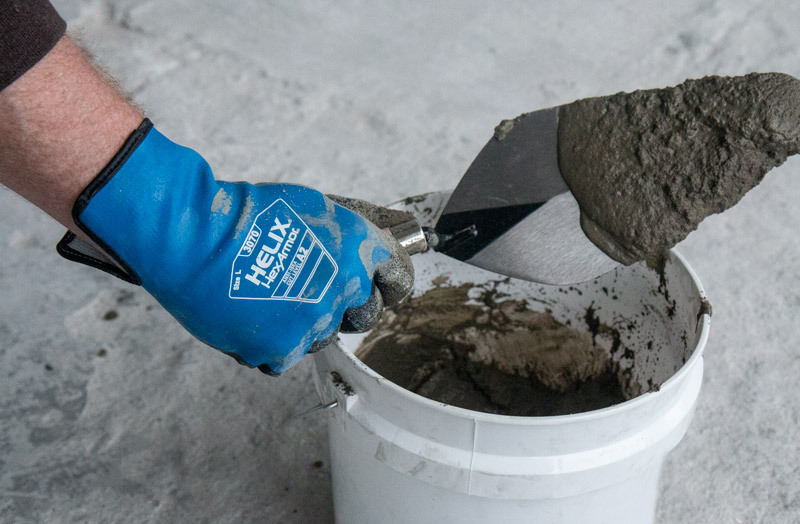Tradies are being told to remain on high alert for one of the industry’s most painful injuries – cement burns.
What are cement burns?
Almost 60 per cent of the cement used around Australia is made up of lime, which contains calcium oxide that can cause chemical burns when exposed to unprotected skin.
The longer the exposure, the more serious the burn, with exposed forearms, hands, wrists, knees, lower legs and feet being the most vulnerable.
When caught early, cement burns can take shape as redness and swelling, looking similar to an average work site sunburn. But all too often, tradies don’t know they’ve been exposed until it’s time to clock off when the now-dry cement, combined with the hot Aussie sun, has already done the damage.
In a 2007 study looking at cases of cement burn injuries at St James’s Hospital in Dublin, Ireland, between 1996 and 2005, researchers found that the average exposure time for people who ended up with severe burns was about 60 minutes.
Limited exposure to cement isn’t likely to cause burns if you wash your hands immediately with water and pH-neutral soap (which should hopefully be provided on-site). But as always, prevention is the best medicine, so try avoiding touching wet cement altogether.
What does a chemical burn look like?
Depending on the type of exposure, cement burn symptoms may include:
- Itchiness
- Blistering
- Redness
- Pain
- Dry Skin
- Scabbing
How to protect yourself against cement burns
According to the Australian & New Zealand Burn Association, there are several ways tradies can guard against cement burns.
- If you are splashed with wet concrete, immediately remove any exposed clothing and wash the your skin with PH-neutral soap. Keep monitoring the area for irritation for the rest of the day.
- Remove jewellery, bracelets, and watches as they increase the opportunity for abrasion and the areas where wet concrete accumulates.
- Make sure the work site has immediate access to reliable and clean water that can be used to wash exposed skin.
- Train workers on the dangers of both wet cement and wet concrete, emphasising the need for burn prevention and immediate first aid.
- Wash any cement-contaminated work gear separately from the rest of your normal clothes.
- Be proactive on the job site. Set up burn prevention kits and have them readily available in high-risk areas. These kits should include clean, absorbent towels, clean socks, eyewash solution and white vinegar for neutralising chemical reactions.
Find the right PPE
When it comes to keeping yourself safe around cement, the most important thing tradies can do is invest in protective equipment.
Long-sleeved shirts, long pants, and sturdy rubber boots are simple yet effective ways to protect your most vulnerable areas from everyday exposure.
But If you’re handling cement directly, we at Build-it recommend picking up a pair from uvex’s newest line of innovative safety gloves.
Profi pure HG

If you’re working in the wet, there’s no better choice than the uvex profi pure HG. Combining the comfort of a quality interlock cotton liner with uvex’s unique Hydro Grip coating technology, this latest evolution of the company’s award-winning product keeps your hands safe from cement with a 360-degree barrier seal.
Unilite 7710F

For tradies who prefer a more traditional seamless glove, look no further than uvex’s unilite 7710F. Complete with an NBR double coat barrier and boasting excellent grip courtesy of the sandy finish palm coating, this glove allows concreters and bricklayers to maintain high levels of dexterity while working with cement.
HexArmor Helix 3070 & 3071

If you find yourself surrounded day in and day out by wet cement, you might want to take your protection game to the next level with the HexArmor Helix 3070 and 3071. Labelled the ultimate pair of protective gloves, the Hex Armor range offers tradies a complete barrier against the risk of concrete burns with the exceptional wet grip from a latex palm coat, PLUS two choices in cut protection.





